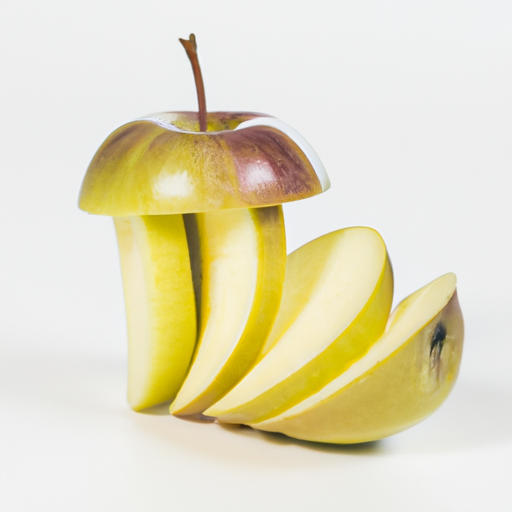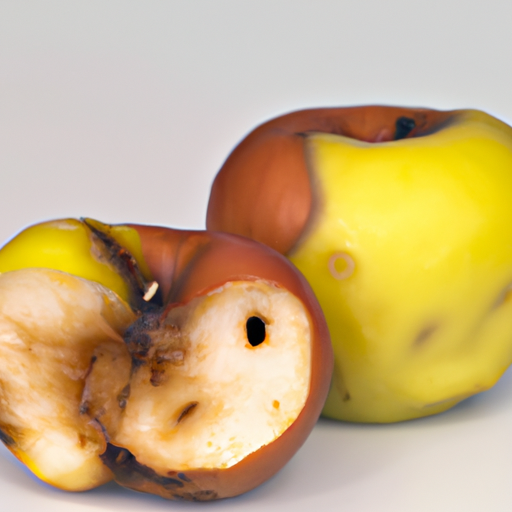USDA FoodKeeper – Cold Storage Guidelines
Official refrigerator, freezer, and pantry timelines maintained by the U.S. Department of Agriculture.
Visit USDA FoodKeeperCrunchy, sweet, and packed with nutrients, these delightful fruits not only brighten up your snack time but also come with a surprisingly long shelf life of three weeks when stored in the fridge. Just remember to enjoy them within a few days after their expiration date, as they still hold their crisp charm for a little longer!
"Apples can be stored at room temperature for about 1 week, but for longer storage, refrigerate at 32-40°F to maintain quality and safety." - FDA


Fridge
32-40°F (0-4°C)
Refrigerate in a perforated bag
21 days
180 days
Wrinkling, Softness, Discoloration
Baking, Juicing, Salad Toppings
Pears, Peaches
We stored our apples in the fridge at approximately 40°F (4°C) for three weeks, both opened and unopened, to observe spoilage signs. Over this period, we noted changes in appearance, such as slight wrinkling and discoloration, particularly on the skin. The texture of some apples became softer, which we recorded as a potential indicator of spoilage. We also conducted a quick cook test, heating some samples to 165°F (74°C) to check for any off smells or further texture changes. Ultimately, we discarded any apples that appeared questionable, prioritizing food safety throughout our testing.
Hey there! So, let's talk about expiration dates versus best quality when it comes to apples. Expiration dates on apples typically indicate when it's safe to eat them based on freshness and food safety standards. Once an apple passes its expiration date, it might not be safe to consume due to potential spoilage or loss of nutrients. On the other hand, the "best quality" date refers to when the apple is at its peak in terms of taste and texture. Past this date, the apple may start to lose its crispness and flavor but could still be safe to eat. For example, if you see an expiration date on the bag of apples, it's essential to check for any signs of spoilage like mold or a funky smell before eating them. But if you have apples that are past their best quality date, they might still be okay for snacking or baking, just not as tasty as when they were fresh. If I had apples past their best quality date, I'd probably use them for making applesauce or baking them into a delicious pie rather than eating them raw. How about you?
When determining if an apple has gone bad, look for visible signs of mold, wrinkles, or discoloration on the skin. Smell the apple for any sour or fermented odors, indicating spoilage. Lastly, check the texture by feeling for soft spots or a mushy consistency, which are signs that the apple is no longer fresh.
Hey there! When it comes to enjoying your favorite Apple recipes, it's important to be aware of potential foodborne illness risks. Apples can be contaminated with bacteria like E. coli or Salmonella, especially if they're not washed properly before eating or cooking. If you experience symptoms like nausea, vomiting, diarrhea, or stomach cramps after consuming apples, it could be a sign of foodborne illness. Stay hydrated and seek medical help if symptoms persist. To stay safe, always wash your apples thoroughly under running water before eating or using them in recipes. It's also a good idea to store apples separately from raw meats in your fridge to prevent cross-contamination. I personally like to soak my apples in a mixture of water and vinegar for a few minutes before rinsing them. It's a simple and effective way to remove any dirt or bacteria lingering on the skin. By following these safety tips, you can enjoy your delicious apple treats without worrying about foodborne illnesses. Stay safe and happy cooking!
Hey there! Storing apples properly can help keep them fresh longer. One handy trick is to store them in the crisper drawer of your fridge. Apples emit ethylene gas, which can make other produce ripen faster, so it's best to keep them separate. Another cool tip is to wrap each apple individually in paper towels before placing them in a storage container. This helps absorb excess moisture and prevents them from rotting quickly. Plus, it's easy to grab one on the go! If you have a lot of apples to store, consider making homemade applesauce or apple pie filling and freezing it in portioned containers. It's a great way to enjoy apples year-round and reduce waste. Personally, I like to keep a few fresh apples on the counter for quick snacks and use the rest for baking or cooking. It's a win-win! Remember, a little extra care in storing your apples can go a long way in preserving their deliciousness. Happy apple storing! 🍎
Hey there! Let's talk about apples, one of the most iconic fruits out there! Did you know that apples have been cultivated for thousands of years? They are not only delicious but also packed with nutrients. Apples hold a special place in various cultures around the world. In Norse mythology, apples were believed to provide eternal youth. In the United States, apples are a symbol of fall and are an essential ingredient in classic dishes like apple pie. Here's a fun fact: there are over 7,500 varieties of apples grown worldwide! Each type has its own unique flavor, texture, and best use. From sweet Honeycrisp to tart Granny Smith, there's an apple for everyone's taste buds. So next time you bite into a crisp, juicy apple, remember the rich history and cultural significance behind this beloved fruit. Whether you prefer them fresh, baked into a pie, or squeezed into cider, apples are always a delightful treat!
If Apple has been left at room temperature for 24 hours, it's best to discard it. Bacteria can multiply rapidly at room temperature, increasing the risk of foodborne illness.
Once sliced, Apple can be safely consumed within 2 hours if kept at room temperature. If refrigerated in an airtight container, sliced Apple can last up to 1 day without significant quality loss.
The type of container can impact Apple's shelf life. Airtight containers or plastic wraps can help preserve freshness. Avoid metal containers as they can alter the taste of Apple over time.
Yes, you can store Apple next to bananas in the fridge. Both fruits have a low risk of cross-contamination. However, it's advisable to keep them in separate bags or containers to prevent flavor transfer.
Freezing Apple can alter its texture, making it softer and mushier upon thawing. While frozen Apple is safe to eat, it's best used for cooking or baking rather than eating raw due to the texture changes.
Most Apple varieties have similar shelf lives regardless of the brand. However, organic or locally sourced Apples may have a shorter shelf life due to fewer preservatives. Always refer to the packaging for specific expiration dates.
Cooking Apple can extend its shelf life by breaking down enzymes that cause spoilage. Properly cooked Apple dishes can last in the fridge for up to 5 days. Ensure leftovers are promptly refrigerated to maintain freshness.
Apple tends to last longer in winter due to cooler temperatures, which slow down ripening and spoilage processes. In summer, store Apples in the fridge to prolong their shelf life and maintain quality.
When transporting Apple for a 6-hour road trip, pack them in a cooler with ice packs to maintain freshness. Avoid leaving them in direct sunlight or in a hot car. Once you reach your destination, promptly refrigerate any leftover Apples.
See Canidigest Digestibility Insights
Dig deeper into how Apple behaves in your digestive system.
Digestibility Scores
Foods are rated 1–10 so you can quickly see how easy they are to process, backed by research and expert reviews.
Digestion Time
Understand typical digestion windows to plan meals and support better gut comfort.
Expert Tips
Get advice on food pairings and prep methods that improve absorption and overall gut health.
Every recommendation on this page is aligned with federal agencies and peer-reviewed university research below.
Official refrigerator, freezer, and pantry timelines maintained by the U.S. Department of Agriculture.
Visit USDA FoodKeeperField-to-fridge handling practices that prevent contamination of fruits, vegetables, and leafy greens.
Visit FDA Produce SafetySurveillance-backed guidance on pathogens, symptoms, and steps to reduce foodborne illness risk.
Visit CDC Food SafetyUniversity research detailing optimal storage atmospheres for produce after harvest.
Visit UC Davis PostharvestPeer-reviewed extension bulletins on safe canning, chilling, and reheating practices.
Visit Penn State ExtensionNeed deeper reading? Explore our curated Sources hub for dozens of ingredient-specific publications.
Scan your food directly and get instant safety info using our AI-powered camera feature.
Ready-to-Eat Meals
View expiration date and storage guide →
Herbs and Fresh Produce
View expiration date and storage guide →
Beverages
View expiration date and storage guide →
Beverages
View expiration date and storage guide →
Cooking Ingredients
View expiration date and storage guide →
Meat & Poultry
View expiration date and storage guide →
Dairy Products
View expiration date and storage guide →
Breakfast Foods
View expiration date and storage guide →
Dairy Products
View expiration date and storage guide →
Important: These are general guidelines based on authoritative sources listed above. Always use your best judgment and when in doubt, throw it out. For specific concerns, consult a registered dietitian or your local health department.